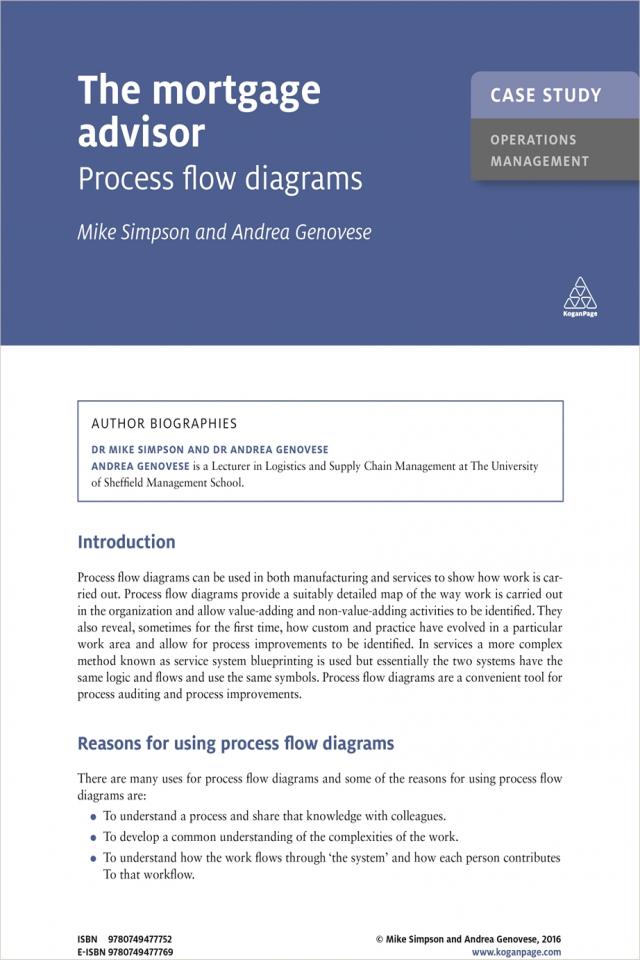- Promotes an understanding of how the work flows through 'the system'
- Assesses alternatives ways of working and create suitable performance measures
- Looks at customer flows and interactions with the service system
Case Study: The Mortgage Advisor
Process Flow Diagrams
Key features at a glance
Ebooks are subject to sales tax in many regions, including all EU countries. Tax will be calculated at the checkout where applicable.
You can read ebooks purchased from our website through the Kogan Page Bookshelf®.
Powered by VitalSource®, it enables anytime, anywhere access, including Read Aloud: simply log in to the desktop app or download the Bookshelf app for iOS or Android and Kindle Fire. To learn more please visit our ebooks page.
About the book
The case study clearly explains how process flow diagrams can be used in both manufacturing and services to show how work is carried out. The authors illustrate how process flow diagrams provide a suitably detailed map of the way work is carried out in an organisation and allow value-adding and non-value adding activities to be identified. Process flow diagrams also reveal how customer and practice have evolved in a particular work area and allow for process improvements to be identified. Process flow diagrams are a convenient tool for process auditing and process improvements.
Aimed at students on operations management courses, the reader is given a narrative explanation of the process and is given the task of logically developing an overall process flow diagram and assessing the process to see if there are opportunities for improvements. As this is a common exercise when involved in any improvement programme, this case study allows the reader to develop and practice essential skills.
In this case study Mike Simpson and Andrea Genovese promote an understanding of how the work flows through "the system" and assess alternative ways of working and create suitable performance measures. This case study also looks at customer flows and interactions with the service system.



